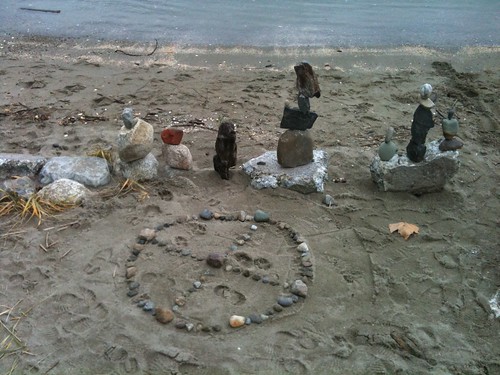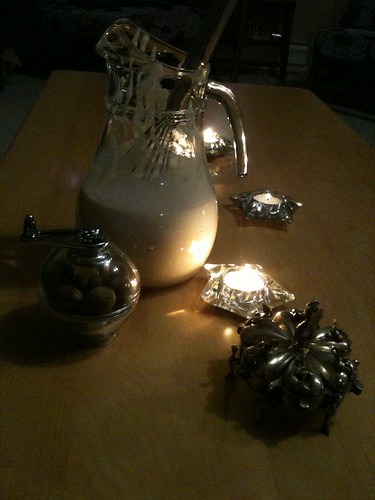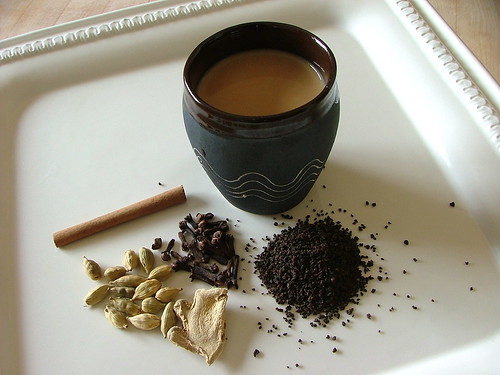Today/tomorrow is
winter solstice - the shortest day and the longest night in the year. Marking the darkest and the most difficult time of the year, where light and warmth is sparse, this is when human being around the world have created other ways to supply themselves with these important resources – by spending those dark, long, cold nights with one another and enriching them with sharing their experiences.
Storytelling, music and dance have been a natural way to combat the winter fatigue, depression and anxieties. In modern day living, when the communities have been broken down and families are spread all over the world, this time of year is a special one, when people actually do get together and set that time aside to nourish each other and keep each other company in the dark.
Some cultures have incorporated fragrance into the winter celebration. The following are a few ideas for adapting these customs into modern day living – whether you are religious or not.
CandlesWell, you all know what my people do to brighten up the winter. We light those candles on a 9 branched candlestick called Chanukia. Each night, one candle is added until in the 8th night of the holiday, the Chanukia is all lit up.
While Chanuka is over, the possibilities of lighting candles are not. Candles have a warm, soft light and make each situation feel somewhat more intimate and less intimidating. I always light candles in parties rather than have a full-blown electric light, to make my guests feel more comfortable and to set a different, more festive mood. If you have fragrant candles, all the better. Soy wax or beeswax candles are the cleanest burning and are better for you and the environment.
If your candles are unscented, you can scent them yourself by anointing them with your own oil. Simply rub the outside of the candle with an oil based perfume, and the room will be filled with a gentle aroma and a gentle light. I recommend using a natural perfume oil for that matter. I used to do that with my Moon Breath perfume with spectacular results, and I’m sure you could do the same with more simple combinations of oils that appeals to you. Use a base of jojoba, almond or olive oil for best results.
BathingIn Japan, yuzu fruit are added to hot baths for a festive winter solstice bathing ritual. And indeed, I can’t recommend a better time for a citrus bath than now. While public bathing is rarely part of Western culture, this might be a good time to share your bath with those who you feel comfortable with and depending on the size of your bath. Citrus scented bath at this time will also have none of the photoxic risk (unless you live in a sunny country), as your skin will most likely be non exposed to the sun after taking the bath… Even if taken alone, this rejuvenating fragrant bath is sure to chase away the winter gloom and bring in positive thoughts like sunny orchards.
Here is a recipe for a nourishing and fragrant citrus bath oil.
Yellow Yuzu Bath Oil
100ml Almond Oil
2 capsules vitamin E
20 drops Lemon essential oil
20 drops Litsea Cubeba essential oil
50 drops Yuzu essential oil
20 drops Grapefruit essential oil
5 drops Clementine essential oil
IncenseFrankincense and Myrrh were gifted to Jesus Christ upon his birth, and have played a symbolic role in other places in the New Testament (myrrh was given to Christ on the cross to relief his pain, as it is an analgesic). Symbolically, frankincense is associated with the sun, while myrrh is associated with the earth. There couldn’t be a better time to burn incense. An incense made of equal amounts of frankincense tears and myrrh resin would be very appropriate. Burn it on a hot charcoal in a censer to create an atmosphere in your gathering and bond between those presents; or, burn it in your home to clear it energetically, flowing new energy into the rooms where the incense is brought into, and creating space for more sunlight and warmth.
TeaOnce upon a time, my parents decided to buy a wood stove to heat the little hat they built in the Western Galilee. And a very clever idea that was, as there was no better way to heat the house other than that. So, they took me and my baby brother for a sleepover in a Druze family in the village of Hurfesh in the Upper Galilee, who brought us the next day to Beith Jan to buy the said wood stove. The family lived in one room, and in the night time, mattresses were placed all over the floor for the family members to sleep. There were only two additional rooms to the house – an outhouse, and the kitchen. And in the living room (which is were everyone really did live), there were only two pieces of furniture – a wood stove for heating the space and a dining table. The three kids that lived there had no toys at all, but they did have markers and paper. And they drew rooms with light bulbs hanging from their ceilings – something that seemed very odd to me (we did not have electricity in our village). Somehow, the bareness of their home seemed to be quite inspirational to my parents and I can’t remember myself being bored there even for one moment, as the kids were welcoming and shared all they had with us.
A wonderful spice tea that is served during the winter months in most Druze homes in the Galilee and the Golan heights is called “Hulnejan”. It is a combination of three spices: dried ginger root, dried cinnamon bark and a root called “hulnjan” that is spicy and earthy all at once. It releases a beautiful aroma in the home when cooked. Practically, it is left on the fire place the whole winter, and the family members and guests will gather to drink it (it is very spicy), sweetened with sugar and topped with freshly unshelled pecan nuts. It is still a mystery to me what “hulnjan” is or where to find it out of the Druze community, but a similar tea can be brewed, with spices of your choice.
A tea ceremony of any kind is an excellent way to enjoy togetherness during the winter time. You can prepare your own chai tea with your own whole spices. I made this chai during Hanukah and we sat together and ate donuts and drank chai. It was unforgettabley delicious… I’m no tea expert, so take or leave what you like of this recipe. But one thing is for sure – homemade chai is so much better than those tea bagged chai teas from the supermarket.
2 tsp. Assam tea
1 star anise
½ tsp black peppercorns
1 small piece of whole, dry ginger root
6 green cardamom pods
4 clove buds
1 cinnamon stick
8 pimento berries
½ nutmeg nut
½ cup water
4 cups whole milk
4 tsp. sugar
In a small pot, cover the spices and tea with water and bring to a boil. Add 4 cups of whole milk. Bring to a simmer. Add 4 teaspoons brown sugar and cover the pot for 5 minutes to allow the milk to absorb the aroma. Strain and serve in small cups to encourage everyone to ask for more many times!


![Yuzu (유자, ゆず, 柚子) Citrus Ripening on Tree, Chiba, Japan by jacob schere [in the 03 strategically planning]](http://farm8.staticflickr.com/7163/6523488035_f6afda369e.jpg)




